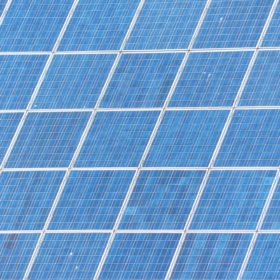
Taiwanese cell manufacturer Inventec Solar reportedly halted production this month and Ireland is preparing to remove rooftop solar panel restrictions, according to the Irish Independent.
The U.K. government’s Department for Business, Energy and Industrial Strategy (BEIS) has revealed further details of the planned €5 billion ($5.9 billion) ‘SDE++’ auction aimed at incentivizing CO2 abatement. The exercise – which will be held in ‘Sept-Oct’ according to a low-carbon hydrogen business models research paper published by BEIS – will have four bidding rounds in which developers will lodge competing bids for an amount payable for each metric ton of CO2 which would have been emitted by conventional alternatives allocated for each carbon-saving technology, with a maximum incentive of €300/mt.
The technology-neutral auction will apply to renewables generation plants, hydrogen from electrolysis and carbon capture and storage (CCS) facilities, despite the research paper warning low-carbon hydrogen producers would be too wary of risks to demand to compete in a technology-neutral exercise. Comparing low-carbon hydrogen generation technologies, the paper cited the small, modular nature of electrolysis units, the dispatchability of the tech and the lack of carbon emissions. Biomass gasification – heating biomass to generate hydrogen and CO2 – is considered carbon neutral by BEIS because of the absorption of the greenhouse gas by biomass feedstock while it is growing, and could be carbon negative if combined with CCS, said the paper, but the technology is still at demonstration level and has never been combined at scale with carbon capture. Methane reformation, said the paper, is a mature tech but is inflexible in dispatchability terms and would require CCS as the mixture of methane with steam generates CO2 as well as hydrogen. It would also require methane, a greenhouse gas far more potent than CO2.
The Iranian state-owned Shana Petro Energy Information Network has reported the start of operations at the state’s first floating PV project. The 200 kWh/day, IRR8.5 billion ($202,000) facility at the Mahabad Petrochemical Complex could rise to a generation capacity of 500 kWh/day if a projected second phase comes online to supply electricity to 400 rural households. The project was installed after six months’ research, according to the Shana website, and offers a less-than-five-year return on investment “with the support of the government.”
The website of China and Taiwan electronics industry newspaper Digitimes has reported Taiwanese solar cell manufacturer Inventec Solar Energy ended cell production this month. The English language website of the company, a subsidiary of the Inventec Corp electronics group, today made no mention of the development but the latest news release on the site was dated last year.
South Korean conglomerate Hanwha revealed at the end of last month it has begun using hydrogen produced at its Hanwha Total Petrochemical production site in Seosan to generate up to 400 GWh of electricity per year at what it describes as the “world’s largest industrial hydrogen fuel cell power plant.” The petrochemicals facility produces up to three tons of hydrogen per hour which is harnessed by the 114-fuel-cell hydrogen facility nearby at the Daesan Industrial Complex and which will also generate up to 120,000 mt of water vapor annually for use in hydrocarbon production. The facility, which belongs to the parent company of solar manufacturer Hanwha Q Cells, entered operation last month, according to Hanwha.
U.S.-based industrial gases project developer Air Products will work with the Uhde Chlorine Engineers business of German engineer and steelmaker Thyssenkrupp to develop green hydrogen electrolysis facilities, the American business announced in early July.
The Sustainable Energy Authority of Ireland (SEAI) body responsible for issuing grants for solar panel installation has said restrictions on the number of modules which can be installed on roofs without planning permission are set to be reduced “in the coming months,” according to a report in the Irish Independent newspaper last week. Irish rules call for planning permission to install panels which cover more than either 12m2 or half of residential roofs – whichever is smaller – or more than 50m2 or half of business and light industrial rooftops. Ireland’s Department of Housing, Planning and Local Government said it was working with the Department of Climate Action and the Irish Aviation Authority on revising the guidelines, according to the newspaper report. The Independent also stated the SEAI had received 1,516 applications for solar grants this year, to the end of July – 216 per month – and has raised this year’s budget from €3.5 million to €6.5 million to meet demand.
Lắp đặt điện mặt trời Khải Minh Tech
https://ift.tt/2X7bF6x
0906633505
info.khaiminhtech@gmail.com
80/39 Trần Quang Diệu, Phường 14, Quận 3
Lắp đặt điện mặt trời Khải Minh Tech
https://ift.tt/2ZH4TRU
Không có nhận xét nào:
Đăng nhận xét